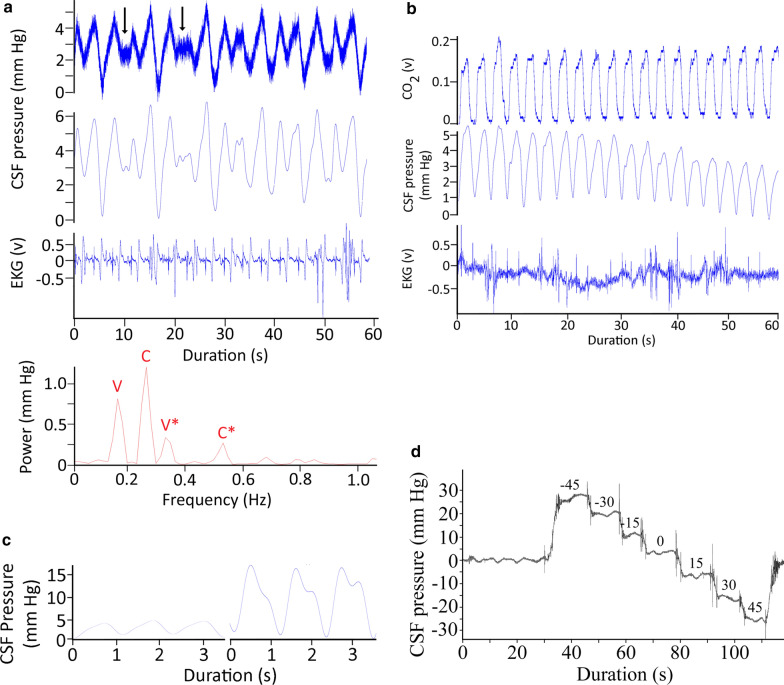Fig. 4.
a 60 s data record of Alligator mississippiensis ventilating at 10 breaths per minute. The raw CSF and EKG tracings were recorded simultaneously. These traces were recorded shortly after those shown in Fig. 1a, here there are "disruptions" to the periodicity of the CSF pulsations (black vertical arrows). These disruptions, evident in the raw and filtered CSF traces, match the frequency of the ventilatory cycle, which was also evident in the power spectral analysis. C—heart rate, V—ventilatory rate, *—harmonics. b 60 s data record of A. mississippiensis showing simultaneously recorded CO2 consumption, CSF pressure, and EKG. Note the clear temporal correlation between the CSF pulsations and the ventilatory cycle, and the lack of a temporal pattern between the R peaks of the EKG and the CSF pulsations. c Two 3 s data tracings pulled from a 3 min continuous recording of CSF pressure in A. mississippiensis. The traces on the left were recorded shortly before the administration of epinephrine; those on the right were recorded approx. 40 s after the administration. d Influence of rotation of A. mississippiensis on CSF pressure. These rapid sequential rotations demonstrate the linear relationship between posture and CSF pressure

